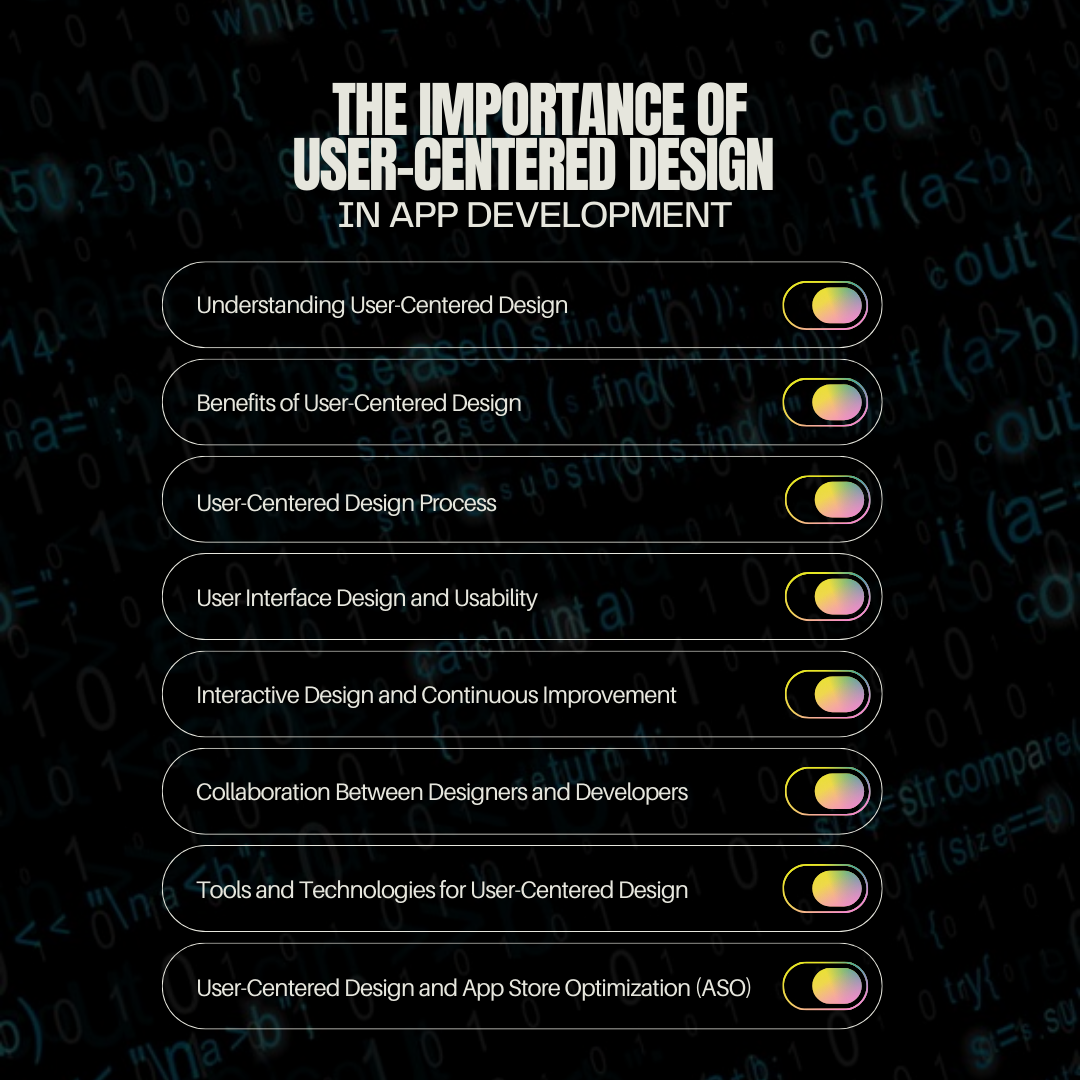The Importance of User-Centered Design in App Development
Share this to

Table of Content:
- Understanding User-Centered Design
- Benefits of User-Centered Design
- User-Centered Design Process
- User Interface Design and Usability
- Interactive Design and Continuous Improvement
- Collaboration Between Designers and Developers
- Tools and Technologies for User-Centered Design
- User-Centered Design and App Store Optimization (ASO)
- Conclusion

Creating a user-centered design is critical for success in today's competitive mobile app industry. To create intuitive and engaging mobile app experiences, user-centered design focuses on understanding user needs, behaviors, and preferences. In this article, we will discuss the significance of user-centered design in app development, its benefits, and the essential procedures and principles involved in putting it into practice.
Understanding User-Centered Design
User-Centered Design is an approach to designing products, systems, and experiences that places the needs, preferences, and behaviors of the users at the center of the design process. The goal of User-Centered Design is to create products that are not only functional and visually appealing but also intuitive, efficient, and enjoyable to use. It involves understanding the users' perspectives, conducting research, and involving them throughout the design and development process.
To reach the final design, the Terato team will strive to connect business objectives with user needs. User-centered design requires empathy for users while balancing the pragmatic approach required when creating for a business or clients.
Benefits of User-Centered Design
User-Centered Design offers numerous benefits that positively impact both users and businesses. By putting users at the forefront of the design process, UCD helps create products that are not only functional but also enjoyable, efficient, and aligned with user expectations. This ultimately leads to higher user satisfaction, increased adoption rates, and improved business outcomes.
Incorporating user-centered design principles into app development requires investment in user research, prototyping, testing, and ongoing iterations. However, the benefits it brings to both users and businesses can result in a more successful, user-focused app that drives positive outcomes for all parties involved.
User-Centered Design Process
The User-Centered Design (UCD) process is a systematic approach that prioritizes the needs, behaviors, and preferences of users throughout the design and development of a product, system, or experience. The process typically involves several stages that are iteratively revisited to ensure that the final design meets user expectations and addresses their requirements.
It's important to note that the User-Centered Design process is not strictly linear; it often involves moving back and forth between stages as new insights and feedback are collected. The iterative nature of the process allows for continuous refinement and optimization, ensuring that the final product aligns with user needs and expectations.
User Interface Design and Usability
The relationship between User Interface (UI) design and usability is closely intertwined. A well-designed user interface contributes to usability by providing clear visual cues, intuitive navigation, and an overall pleasant experience. However, good UI design alone doesn't guarantee usability. The design must also consider user needs, behaviors, and the context in which the product will be used.
To achieve optimal usability, UI design and usability testing go hand in hand. Usability testing involves observing real users interacting with the product to identify pain points, bottlenecks, and areas for improvement. This feedback informs iterative design changes that enhance both the user interface's visual appeal and the product's overall usability.
Interactive Design and Continuous Improvement
Interactive Design and Continuous Improvement are closely connected in the user-centered design process. Interactive design focuses on creating interfaces that allow users to interact with products effectively, while continuous improvement ensures that those interactions are constantly refined based on user feedback and evolving needs.
As part of continuous improvement, designers use insights gained from interactive design and user interactions to identify areas where the user experience can be enhanced. Iterative design changes are then implemented, leading to an ongoing cycle of improvement. This process not only results in a better user experience but also allows the product to stay relevant and competitive in a rapidly changing digital landscape.
Collaboration Between Designers and Developers
Collaboration between designers and developers is essential for creating successful digital products and experiences. Both designers and developers bring unique skills and perspectives to the table, and their collaboration ensures that the final product is not only visually appealing but also functional, user-friendly, and technically sound.
Tools and Technologies For User-Centered Design
A variety of tools and technologies are available to support user-centered design processes. Design software, prototyping tools, user testing and analytics tools, as well as collaboration and project management platforms, facilitate efficient and effective design workflows. The choice of tools depends on your specific project requirements, team preferences, and the nature of the design tasks you're working on. It's important to stay updated with the latest tools and technologies as the field of design and user experience continues to evolve.
User-Centered Design and App Store Optimization (ASO)
Implementing user-centered design principles can positively impact app store optimization (ASO) efforts. Optimizing app titles and descriptions, creating appealing screenshots and preview videos, and managing ratings and reviews contribute to better app visibility and user acquisition.
In essence, combining UCD principles with ASO strategies ensures that not only the app's design and functionality are user-centered but also its presentation and visibility within app stores are optimized to attract and engage the right audience.
Conclusion
User-centered design is a crucial aspect of mobile app development. By understanding user needs, behaviors, and preferences, and incorporating these insights into the design process, developers can create mobile apps that provide exceptional user experiences. Implementing user-centered design principles leads to increased user engagement, improved app adoption and retention rates, and ultimately, the success of the app in the competitive app market.
Share this to